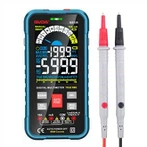Calculating the area of the field of view under the microscope
Pathological reading under the microscope is one of the important contents of the pathologist's work. The results of microscopic observation and recording are the scientific basis for clinical diagnosis. Only when the microscope is used correctly and in a standard way can the results be observed and recorded scientifically. As we all know, the image of microscope is firstly magnified by the objective lens to the specimen, and then magnified by the eyepiece to be observed by people's eyes. The size of the field of view is determined by the field of view of the eyepiece. It should be noted that the observations and records described in this article are made through the eyepiece of the microscope. Other optical paths that do not involve observation through the eyepiece, such as CCDs, digital cameras, and software-operated image acquisition, are described separately. Microscope eyepiece field number (field number, FN) different, the size of the field of view can be seen under the mirror is different, different areas of the area of the mirror has an impact on the positive rate of counting, we should understand the eyepiece field number and the relationship between the area of the field of view. The field of view number of small can see the field of view area is small, on the contrary, the field of view number is large can see the field of view area is large.
1 Eyepiece field of view number of identification
Microscope design and production with international standards, in the microscope eyepiece will mark the field of view, such as Olympus BX50 microscope, eyepiece field of view number 22 (22 value before the English and digital identification is the eyepiece classification name and magnification).
2 Actual field of view and calculation formula
The area on the specimen plane that can be observed by the microscope (the circular area) is called the actual field of view (FOV). The size of the area can be calculated by the following formula.
3 Objective lens magnification
The objective lens is an important optical component used in microscope imaging. Commonly used objective lens magnifications for biological microscopes are 4, 10, 20, 40 and 100. The high magnification objective commonly used for pathology counting is 40.
4 Intermediate magnification
Intermediate magnification is not considered when viewing directly through the eyepiece. Intermediate magnification refers to the magnification of the CCD interface, photographic eyepieces, and CCD components added to the optical path. Because most of the microscopes used nowadays are infinite-range imaging systems, with additional fluorescence observation, local aberration observation, differential interference observation, etc., the components do not change the magnification, and do not need to be considered.
5 Common eyepieces under the field of view area
The most commonly used eyepiece has a field of view of 22. Various microscope manufacturers have successively designed and produced wide field eyepieces with a field of view of 25, and ultra-wide field eyepieces with a field of view of 265. There are also eyepieces with a smaller field of view of 18 or 20.






